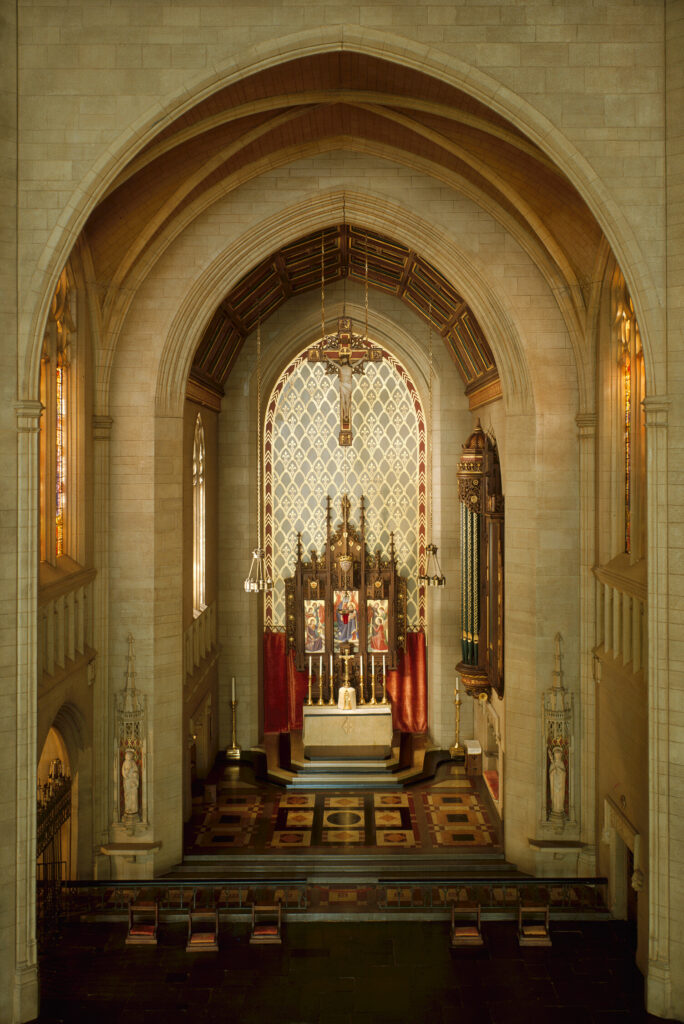Jahangir’s Wine Cups: Mughal Decorative Arts
The Mughal Empire stands as one of history’s most opulent periods known to nurture a rich tapestry of art and architecture that offers a...
Maya M. Tola 14 August 2023
The Thorne miniature rooms are the brainchild of Narcissa Thorne, who crafted them between 1932 and 1940 on a 1:12 scale. Incredibly detailed and captivating, these works are architectural and historical montages of passion and dedication, inviting visitors on a journey through centuries and continents.
While most of the Thorne Rooms are housed at the Art Institute of Chicago, the Phoenix Art Museum, Knoxville Museum of Art, and a few other locations across the United States also have her miniature rooms on display. These absolute marvels are bound to enchant audiences with their artistic and educational value.

Narcissa Niblack Thorne, English Reception Room of the Jacobean Period, 1625-1655, c. 1937, Art Institute of Chicago, Chicago, IL, USA.
Miniatures hold a timeless fascination for humans. They invoke wonder and nostalgia that both transcend cultures and generations. From elaborate afterlife funerary rituals of ancient Egyptians to the intricate craftsmanship of Chinese miniaturists, these tiny replicas captivate our imagination. For many, miniatures indulge a childlike fascination associated with memories of cherished childhood toys and the joy of world-building.

A visitor at the Thorne Rooms at the Art Institute of Chicago, Chicago, IL, USA. AP Photo/Jim Prisching/San Diego Union Tribune.
Narcissa Niblack Thorne was born in 1882 and married her childhood sweetheart, James Ward Thorne, the heir to the Montgomery Ward fortune. The origins of her fascination with miniatures remain speculative, with theories suggesting it may have stemmed from a childhood fondness for dolls and miniature objects or perhaps from receiving a shadow box as a gift in her youth. Despite her rather public status as a wealthy Chicago socialite, Narcissa Thorne remained a private individual. Little was said about her personal life, family, relationships, or hobbies beyond her miniature work.

Enhanced photograph of Narcissa Niblack Throne. Nobility & Royalties.
At the start of Narcissa Ward’s career, the country was thrown into the Great Depression, and skilled artisans across the nation found themselves out of work. During these otherwise difficult times, Ward hired these unemployed artisans to create furniture, rugs, accent pieces, and other items on a miniature scale for her first exhibition.
Once the economy improved, Thorne proceeded to invest in the training of craftspeople in various specializations to continue her unique body of work.

Narcissa Niblack Thorne, Massachusetts Living Room and Kitchen, 1675-1700, c. 1940, Art Institute of Chicago, Chicago, IL, USA.
The Thorne Rooms meticulously recreate a diverse array of historical periods, spanning from the late 13th century to the 1930s, from a multitude of regions across Europe, the Americas, and even Asia. Within these enchanting vignettes, visitors can find grand Tudor manors, opulent French Rococo salons, serene Chinese sitting rooms, and much more. Each room offers a captivating window into a distinct spacetime to compose a rich tapestry of history and culture for viewers to immerse.

Narcissa Niblack Thorne, English Roman Catholic Church in the Gothic Style, 1275-1300, c. 1937, Art Institute of Chicago, Chicago, IL, USA.
The Thorne Rooms are crafted on a 1:12 scale; their proportions and dimensions mirror real-life settings. Intricate architectural features such as molding, paneling, and decorative elements are reproduced to capture the designs from various historical and cultural contexts. The level of detail is astounding, and everything is carefully contemplated.
The furniture in the rooms are put together with a remarkable attention to detail. We can find period-specific designs, materials, and upholstery. The textiles in the Throne Rooms, such as carpets, curtains, and upholstery, are often scaled down while incorporating traditional techniques like weaving and embroidery. These rooms also include a range of accessories, from artwork and tableware to books and personal items and even miniature artworks, all curated to enhance realism and storytelling.

Narcissa Niblack Thorne, French Salon of the Louis XVI Period (c. 1780), c. 1937, Art Institute of Chicago, Chicago, IL, USA.
In some rooms, miniature human figures with poses and clothing adjacent to their times add a sense of life and activity. However, even in rooms with no figurines, the patina, weathering, and other signs of use and wear have made them look lived-in.

Narcissa Niblack Thorne, Virginia Kitchen, 18th century, c. 1940, Art Institute of Chicago, Chicago, IL, USA.
Lighting serves as a pivotal element in crafting the ambiance and atmosphere within the miniature rooms, with meticulous attention devoted to the interplay of light and shadow. This deliberate use of lighting enhances the realism of each scene, evoking a sense of depth and dimensionality.
Additionally, some rooms come with a view showing details beyond the windows. This creates an illusion of stepping into a miniature world. In some others, the decor is changed seasonally. Miniature plants and flowers will alternate according to the time of year. Once again, temporality conveyed in visual form animates the scenes.

Narcissa Niblack Thorne, New Hampshire Dining Room, 1760, Art Institute of Chicago, Chicago, IL. Photograph by Reagle via Wikimedia Commons (CC-BY-SA-4.0). Detail.
Over the years, the Thorne miniature rooms have solidified their status as an iconic attraction. With an estimated number of around a hundred, these miniature marvels offer invaluable insights into history, culture, and design. They resonate with generations of audiences with their timeless allure and have become a legacy of Thorne that attests to her artistic vision.
DailyArt Magazine needs your support. Every contribution, however big or small, is very valuable for our future. Thanks to it, we will be able to sustain and grow the Magazine. Thank you for your help!